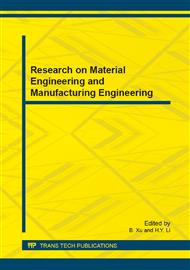p.105
p.110
p.114
p.119
p.127
p.134
p.141
p.145
p.150
A Digital Control for Swinging Arc Narrow Gap MAG Welding System
Abstract:
This paper presents a digital control system for swinging arc narrow gap MAG welding based on double single-chip microcomputers. The control system utilizes a single-chip microcomputer to set and display welding process parameters, and then uses another single-chip microcomputer to realize the control functions that are necessary for the swing arc process, in which the two single-chip microcomputers can exchange data through asynchronous serial communication circuit. Experimental results show that the control system works stably and reliably with strong anti-interference capabilities, and can completely satisfy the requirements of swinging arc narrow gap welding process.
Info:
Periodical:
Pages:
127-133
Citation:
Online since:
November 2013
Authors:
Price:
Сopyright:
© 2014 Trans Tech Publications Ltd. All Rights Reserved
Share:
Citation:


